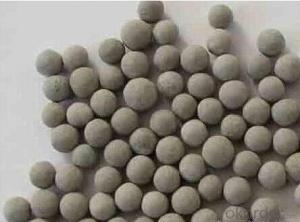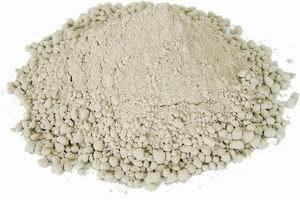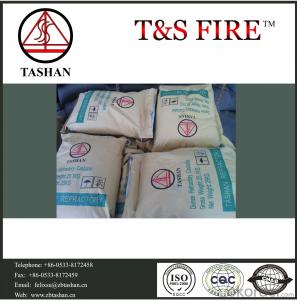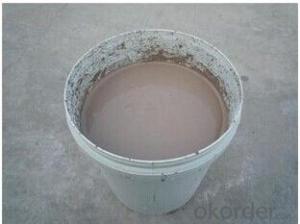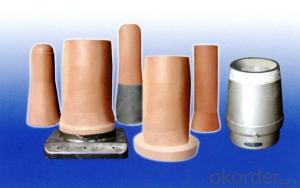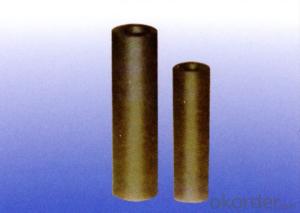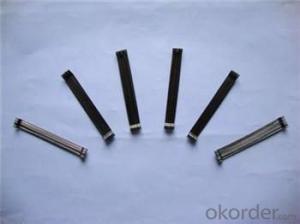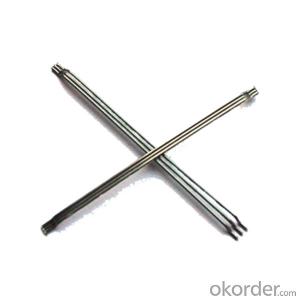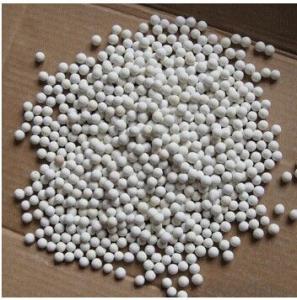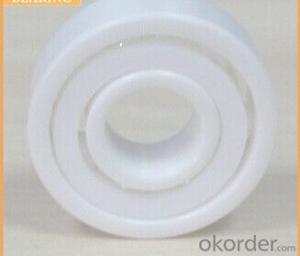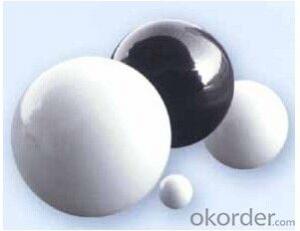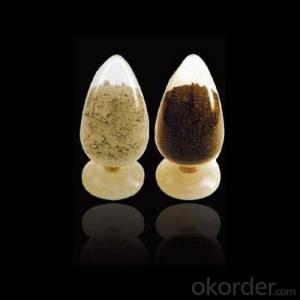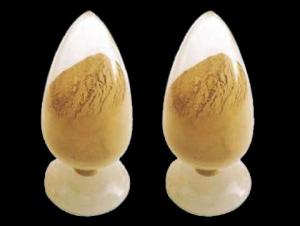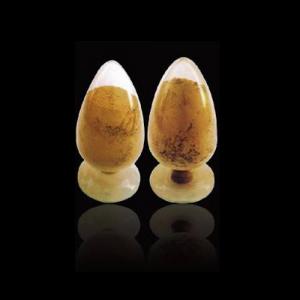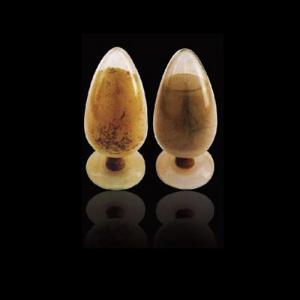Bio Ceramic Ball Water Treatment Monolithic Refractories for Iron and Steel Industry
- Loading Port:
- Qingdao
- Payment Terms:
- TT OR LC
- Min Order Qty:
- 500 m.t.
- Supply Capability:
- 3000 m.t./month
OKorder Service Pledge
OKorder Financial Service
You Might Also Like
Main Ingredients:
Tourmaline: 30%
Porcelain clay: 20%
High grade clay: 15-20%
Others: 30-35%
Main Features:
Amount of generating negative ions: 400500pc/s.cm3
Radiance of far infrared ray the wavelength is 225μm≥85%
PH of soaking water solution: 7.2-7.6
Insoluble, gradually releasing mineral substance
Instruction For Use:
Should wash with clean water for two times in the first, then can be directly used for treating drinking water. Keep from raining, and avoid moisture. Stored in dry place.
Note:
the highest using temperature is at 950
Description:
One kind of environmental protection and health care ball that is mainly made of the natural nonmetal mineral tourmaline, kaolin and high-grade clay by nanometer combination technology, special formula and agglomeration techniques, and used with the ceramic ball for activating, purifying and mineralizing drinking water.
Application :
For various types of water purifier, drinking water dispenser and water supply system and equipments, agriculture and industry, etc.
- Q: What are the common failure modes of monolithic refractories in iron and steel applications?
- Monolithic refractories, known for their exceptional thermal shock resistance, high temperature stability, and mechanical strength, find extensive use in iron and steel applications. However, like any other material, they are susceptible to failure. Numerous failure modes are associated with monolithic refractories in iron and steel applications. 1. Spalling, the detachment of refractory material from the surface, stands as one of the most prevalent failure modes. This detachment occurs due to thermal cycling, mechanical stress, or chemical reactions. Mismatched thermal expansion coefficients between the refractory and the surrounding structure can lead to cracking and subsequent detachment. 2. Erosion, another common failure mode, arises when the refractory material encounters the erosive action of molten metal, slag, or gases. Physical impact from flowing metal or chemical attack by corrosive slag components can contribute to erosion. This results in the loss of refractory material, reduced lining thickness, and compromised performance. 3. Corrosion, a significant failure mode, particularly affects iron and steel applications in contact with aggressive atmospheres or molten metal. The interaction between the refractory material and corrosive agents, such as oxides, sulfides, or alkalis present in the environment, leads to corrosion. Corrosion products weaken the refractory lining and shorten its lifespan. 4. Thermal shock, caused by extreme temperature fluctuations, poses a risk to monolithic refractories in iron and steel applications. Rapid heating or cooling can trigger thermal shock, resulting in cracking and failure of the refractory material. Thermal shock can occur due to uneven heating or cooling, sudden temperature changes, or thermal gradients within the refractory lining. 5. Abrasion is a potential failure mode in specific iron and steel applications, where monolithic refractories are exposed to abrasive wear. This wear occurs when the refractory lining comes into contact with solid particles like metallic oxides, slags, or raw materials. The repeated impact and rubbing action of these particles cause erosion and abrasion of the refractory material, leading to failure. To mitigate these failure modes, it is crucial to select appropriate refractories, employ proper installation techniques, and practice regular maintenance. Regular inspections, repair of damaged areas, and the application of protective coatings can greatly enhance the lifespan and performance of monolithic refractories in iron and steel applications.
- Q: What are the key trends in the use of monolithic refractories in the iron and steel industry?
- It is worth noting that there are several notable trends in the use of monolithic refractories in the iron and steel industry. First and foremost, there is an increasing demand for monolithic refractories due to their superior performance characteristics in comparison to traditional brick refractories. Monolithic refractories provide higher thermal shock resistance, superior insulation properties, and improved resistance to chemical attacks. As a result, they are being used more extensively in various applications within the iron and steel industry. Secondly, there is a shift towards the utilization of low-cement and ultra-low cement castables in monolithic refractories. These materials contain a reduced amount of cement, leading to enhanced refractory properties such as increased strength, better corrosion resistance, and improved resistance to thermal spalling. This trend is driven by the need to enhance the overall efficiency and longevity of refractory linings in iron and steel manufacturing processes. Another significant trend is the development of advanced monolithic refractories that prioritize sustainability and environmental performance. The iron and steel industry is facing mounting pressure to reduce its carbon footprint and minimize its impact on the environment. Consequently, there is a growing emphasis on the use of environmentally friendly binders and additives in monolithic refractories. These novel materials not only offer excellent refractory properties but also contribute to the industry's sustainability objectives. Moreover, there is an increasing focus on the development of monolithic refractories capable of withstanding extreme operating conditions. Iron and steel manufacturing processes involve high temperatures, aggressive chemical environments, and severe mechanical stresses. Consequently, there is a need for monolithic refractories that can withstand these harsh conditions without compromising their performance. The industry is investing in research and development to create refractories that exhibit exceptional resistance to thermal shock, abrasion, and erosion. Lastly, there is a growing adoption of digital and smart technologies for the monitoring and maintenance of monolithic refractories. Advances in sensor technology and data analytics have made it possible to collect real-time data on the condition and performance of refractory linings. This enables proactive maintenance, early detection of potential issues, and optimization of refractory usage, ultimately leading to improved operational efficiency and cost savings. In conclusion, the use of monolithic refractories in the iron and steel industry is witnessing key trends such as the demand for superior performance, the shift towards low-cement and ultra-low cement castables, the development of sustainable materials, the focus on extreme operating conditions, and the adoption of digital and smart technologies for monitoring and maintenance. These trends reflect the industry's continuous efforts to enhance the efficiency, durability, and environmental sustainability of refractory linings in iron and steel manufacturing processes.
- Q: How do monolithic refractories resist high temperatures?
- Monolithic refractories are designed to resist high temperatures due to their unique composition and structure. These refractories are made from a single piece or material, unlike traditional refractory bricks that are composed of multiple pieces. The main reason why monolithic refractories can resist high temperatures is their high melting point. These refractories are made from materials such as alumina, silica, and magnesia, which have high melting points ranging from 1650°C to 2000°C. This means that they can withstand extreme temperatures without undergoing significant deformation or melting. Furthermore, monolithic refractories possess excellent thermal stability. They have low thermal conductivity, which means they can effectively insulate against heat transfer. This property allows the refractories to maintain their structural integrity even when exposed to rapid temperature changes or thermal shocks. In addition, the monolithic nature of these refractories provides them with enhanced resistance to thermal stress. Unlike traditional refractory bricks, monolithic refractories do not have joints or seams that can be vulnerable to thermal expansion and contraction. This makes them more resistant to cracking or spalling when subjected to high temperatures. Moreover, monolithic refractories can form a protective layer or slag on their surface when exposed to high temperatures. This slag acts as a barrier and prevents direct contact between the refractory material and the hot gases or molten metals, reducing the risk of chemical reactions or corrosion. Overall, the combination of high melting point, thermal stability, resistance to thermal stress, and the ability to form protective slag makes monolithic refractories highly effective in resisting high temperatures. They are widely used in various industries, including steel, cement, glass, and petrochemical, where they are exposed to extreme heat conditions.
- Q: How do monolithic refractories perform in reheating furnace applications?
- Due to their exceptional thermal stability, strength, and resistance to thermal shock, monolithic refractories are highly effective in reheating furnace applications. These refractories are specifically designed to withstand the harsh operating conditions commonly found in reheating furnaces, including high temperatures and rapid temperature changes. One major advantage of using monolithic refractories in reheating furnace applications is their ability to provide a seamless lining. Unlike traditional brick refractories that require extensive installation and joints, monolithic refractories can be easily applied as a single, homogeneous layer. This eliminates the risk of thermal stress and cracking at joints, ensuring a more reliable and durable lining. Furthermore, monolithic refractories offer excellent thermal insulation properties, which help conserve energy and reduce heat loss in the reheating furnace. This not only improves overall furnace efficiency but also reduces operational costs. In addition to their insulation properties, monolithic refractories exhibit high mechanical strength, allowing them to withstand the mechanical stress and abrasion caused by the movement of the furnace charge. They also have good resistance to chemical attack from gases, slags, and molten metals commonly encountered in reheating furnace operations. Another advantage of monolithic refractories is their ease of repair and patching, minimizing downtime and ensuring continuous furnace operation. They can be easily shaped and molded to fit various furnace geometries, making them highly versatile and adaptable to different reheating furnace designs. In summary, monolithic refractories offer exceptional performance in reheating furnace applications by providing superior thermal stability, strength, and resistance to thermal shock. Their seamless lining, thermal insulation properties, and resistance to mechanical and chemical stress make them an ideal choice for ensuring reliable and efficient furnace operation.
- Q: How do monolithic refractories contribute to the reduction of heat loss in iron and steel plants?
- Monolithic refractories play a crucial role in reducing heat loss in iron and steel plants through their high thermal insulation properties. These refractories are designed to withstand extreme temperatures and provide excellent resistance to thermal shock and erosion. By lining the walls, roofs, and floors of various equipment and structures in the plants, monolithic refractories help to create a barrier that prevents heat from escaping into the surrounding environment. This insulation not only conserves energy but also ensures efficient heat transfer within the plant, leading to improved productivity and cost-effectiveness.
- Q: How do monolithic refractories improve the efficiency of ladle and tundish preheaters?
- Monolithic refractories improve the efficiency of ladle and tundish preheaters by providing excellent insulation, high thermal conductivity, and resistance to thermal shock. These properties allow for better heat retention, reduced heat loss, and quicker and more uniform heating of the ladle and tundish, ultimately improving the overall efficiency of the preheating process.
- Q: How do monolithic refractories contribute to the reduction of emissions in iron and steel plants?
- Monolithic refractories play a crucial role in reducing emissions in iron and steel plants through their superior thermal insulation properties. These refractories line the furnaces and other high-temperature equipment, preventing heat loss and enhancing energy efficiency. By minimizing heat wastage, monolithic refractories enable iron and steel plants to operate at higher temperatures, leading to increased combustion efficiency and reduced fuel consumption. This, in turn, results in lower greenhouse gas emissions, making monolithic refractories an essential component in the overall efforts to mitigate environmental impact in the iron and steel industry.
- Q: What are the latest advancements in monolithic refractories for the iron and steel industry?
- Enhanced properties have been achieved in the latest advancements of monolithic refractories for the iron and steel industry. These advancements are aimed at withstanding the extreme temperatures and harsh conditions associated with iron and steel production processes. One notable advancement is the utilization of advanced bonding systems that offer exceptional strength and resistance to thermal shock. These systems, including nano-bonding technology, contribute to the overall improvement in the performance and durability of monolithic refractories. Another significant development is the introduction of low cement castables. These castables contain a reduced amount of cement, resulting in enhanced high-temperature strength and erosion resistance. This advancement proves particularly valuable in applications within the iron and steel industry where thermal cycling and mechanical stress are common. Furthermore, the composition of monolithic refractories has seen advancements. The incorporation of advanced raw materials, such as high-quality aggregates and additives, has led to improved thermal conductivity, corrosion resistance, and thermal insulation properties. These developments allow for more efficient and sustainable iron and steel production processes. Additionally, recent advancements have been focused on the development of self-flow castables. These castables possess excellent flowability, facilitating easy installation and maintenance of refractory linings. This advancement not only reduces installation time and costs but also ensures improved lining performance. In conclusion, the latest advancements in monolithic refractories for the iron and steel industry have resulted in improved performance, durability, and efficiency. These advancements enable the industry to enhance its production processes, minimize downtime, and increase overall productivity.
- Q: How do monolithic refractories perform in torpedo ladle applications?
- Monolithic refractories are commonly used in torpedo ladle applications due to their excellent performance and durability. Torpedo ladles are used in the steelmaking process to transport and pour molten metal from the blast furnace to the steelmaking furnace. Monolithic refractories, also known as unshaped refractories, are made from a single material and can be applied as a single, cohesive mass. This makes them highly versatile and easy to install in the torpedo ladle. In torpedo ladle applications, monolithic refractories offer several advantages. First and foremost, they have high heat resistance, allowing them to withstand the extreme temperatures and thermal shocks experienced during the transfer and pouring of molten metal. This ensures that the refractories do not crack or fail under these harsh conditions. Additionally, monolithic refractories have excellent corrosion resistance properties, which is crucial in torpedo ladles where the molten metal can be highly corrosive. They are able to withstand the aggressive chemical environment and prevent chemical reactions that could lead to refractory deterioration. Moreover, monolithic refractories have good thermal insulation properties, reducing heat loss from the molten metal and promoting energy efficiency. This helps to maintain the desired temperature of the metal, ensuring optimal steelmaking conditions. Furthermore, monolithic refractories offer good mechanical strength and resistance to abrasion, making them highly suitable for torpedo ladle applications where the refractory lining is subjected to mechanical stress and wear. Overall, monolithic refractories perform exceptionally well in torpedo ladle applications due to their high heat resistance, corrosion resistance, thermal insulation properties, and mechanical strength. They are able to withstand the extreme conditions and provide a reliable and long-lasting lining for torpedo ladles in the steelmaking industry.
- Q: How do monolithic refractories improve the durability of furnace linings?
- The durability of furnace linings is significantly enhanced by the unique characteristics and properties of monolithic refractories. Unlike traditional brick refractories, which are made up of individual bricks or tiles, monolithic refractories consist of a single, homogeneous structure. A key advantage of monolithic refractories is their ability to eliminate joints and seams, which are weak points in traditional brick refractories. These joints can lead to cracks and failures due to thermal expansion and contraction. In contrast, monolithic refractories are poured or gunned into place, creating a seamless lining that minimizes the potential for cracks. This seamless structure increases the durability of the lining and reduces its susceptibility to thermal stress. In addition, monolithic refractories exhibit excellent thermal shock resistance, which is crucial for furnace linings that experience rapid and extreme temperature changes. The monolithic structure allows for better heat transfer and distribution, preventing localized hotspots that can cause thermal shock and lining failure. This enhanced thermal shock resistance enables the furnace lining to withstand repeated heating and cooling cycles without significant damage, thus improving its overall durability. Furthermore, monolithic refractories offer superior resistance to erosion and corrosion. Furnace linings are often exposed to harsh chemicals, molten metals, and abrasive materials, which can cause erosion and corrosion over time. Monolithic refractories are specifically designed to resist these corrosive agents, protecting the lining from chemical attacks and physical wear. This resistance ensures a longer lifespan for the furnace lining and reduces the need for frequent repairs or replacements. Moreover, monolithic refractories possess better insulation properties compared to traditional brick refractories. They have lower thermal conductivity, meaning that heat transfer through the lining is minimized. This insulation property helps to maintain a more stable and uniform temperature within the furnace, reducing thermal stress on the lining and contributing to its longevity. To summarize, monolithic refractories enhance the durability of furnace linings by eliminating joints and seams, improving thermal shock resistance, providing erosion and corrosion resistance, and offering superior insulation properties. These materials are specifically engineered to withstand the extreme conditions inside furnaces, ensuring a longer lifespan for the lining and reducing maintenance costs in the long term.
Send your message to us
Bio Ceramic Ball Water Treatment Monolithic Refractories for Iron and Steel Industry
- Loading Port:
- Qingdao
- Payment Terms:
- TT OR LC
- Min Order Qty:
- 500 m.t.
- Supply Capability:
- 3000 m.t./month
OKorder Service Pledge
OKorder Financial Service
Similar products
Hot products
Hot Searches
Related keywords
